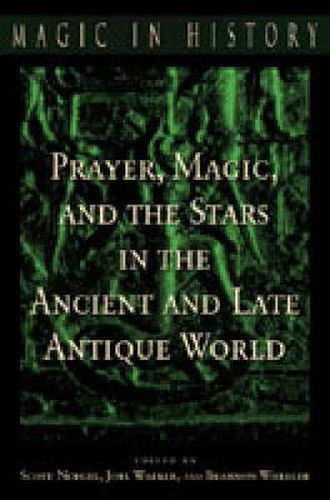Readings Newsletter
Become a Readings Member to make your shopping experience even easier.
Sign in or sign up for free!
You’re not far away from qualifying for FREE standard shipping within Australia
You’ve qualified for FREE standard shipping within Australia
The cart is loading…






This title is printed to order. This book may have been self-published. If so, we cannot guarantee the quality of the content. In the main most books will have gone through the editing process however some may not. We therefore suggest that you be aware of this before ordering this book. If in doubt check either the author or publisher’s details as we are unable to accept any returns unless they are faulty. Please contact us if you have any questions.
In the religious systems of ancient Mesopotamia, Egypt, and the Mediterranean, gods and demigods were neither abstract nor distant, but communicated with mankind through signs and active intervention. Men and women were thus eager to interpret, appeal to, and even control the gods and their agents. In Prayer, Magic, and the Stars in the Ancient and Late Antique World , a distinguished array of scholars explores the many ways in which people in the ancient world sought to gain access to-or, in some cases, to bind or escape from-the divine powers of heaven and earth. Grounded in a variety of disciplines, including Assyriology, Classics, and early Islamic history, the 15 essays in this volume cover a broad geographic area: Greece, Egypt, Syria-Palestine, Mesopotamia, and Persia. Topics include celestial divination in early Mesopotamia, the civic festivals of classical Athens, and Christian magical papyri from Coptic Egypt. Moving forward to Late Antiquity, we see how Judaism, Christianity, and Islam each incorporated many aspects of ancient Near Eastern and Graeco-Roman religion into their own prayers, rituals, and conceptions. Even if they no longer conceived of the sun, moon, and the stars as eternal or divine, Christians, Jews, and Muslims often continued to study the movements of the heavens as a map on which divine power could be read.
$9.00 standard shipping within Australia
FREE standard shipping within Australia for orders over $100.00
Express & International shipping calculated at checkout
This title is printed to order. This book may have been self-published. If so, we cannot guarantee the quality of the content. In the main most books will have gone through the editing process however some may not. We therefore suggest that you be aware of this before ordering this book. If in doubt check either the author or publisher’s details as we are unable to accept any returns unless they are faulty. Please contact us if you have any questions.
In the religious systems of ancient Mesopotamia, Egypt, and the Mediterranean, gods and demigods were neither abstract nor distant, but communicated with mankind through signs and active intervention. Men and women were thus eager to interpret, appeal to, and even control the gods and their agents. In Prayer, Magic, and the Stars in the Ancient and Late Antique World , a distinguished array of scholars explores the many ways in which people in the ancient world sought to gain access to-or, in some cases, to bind or escape from-the divine powers of heaven and earth. Grounded in a variety of disciplines, including Assyriology, Classics, and early Islamic history, the 15 essays in this volume cover a broad geographic area: Greece, Egypt, Syria-Palestine, Mesopotamia, and Persia. Topics include celestial divination in early Mesopotamia, the civic festivals of classical Athens, and Christian magical papyri from Coptic Egypt. Moving forward to Late Antiquity, we see how Judaism, Christianity, and Islam each incorporated many aspects of ancient Near Eastern and Graeco-Roman religion into their own prayers, rituals, and conceptions. Even if they no longer conceived of the sun, moon, and the stars as eternal or divine, Christians, Jews, and Muslims often continued to study the movements of the heavens as a map on which divine power could be read.